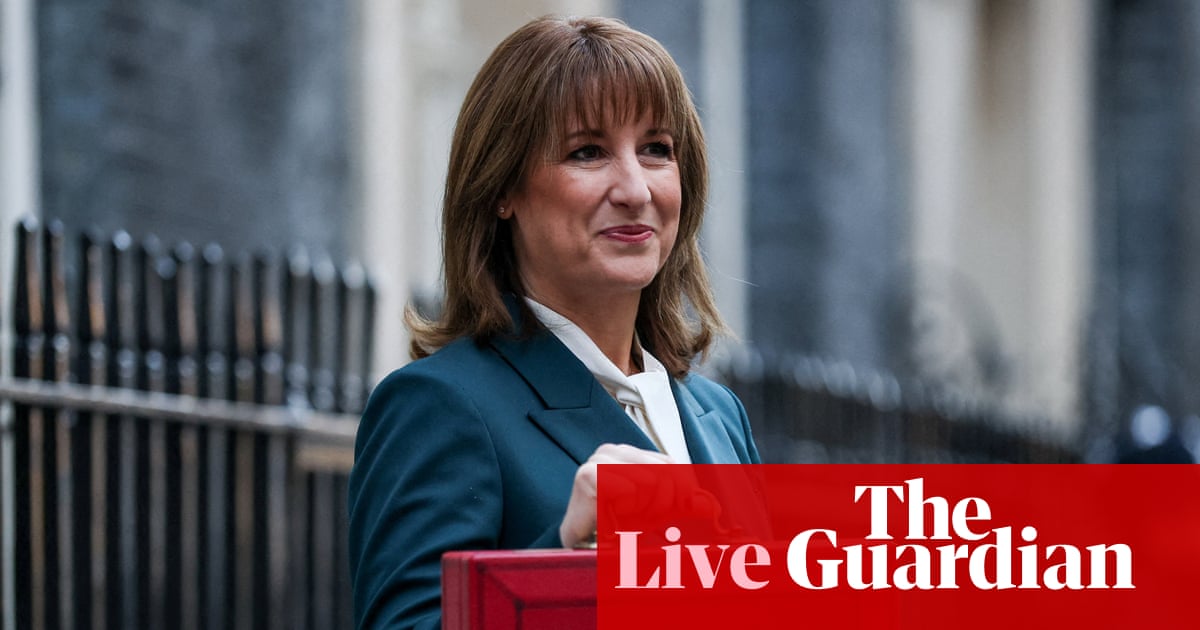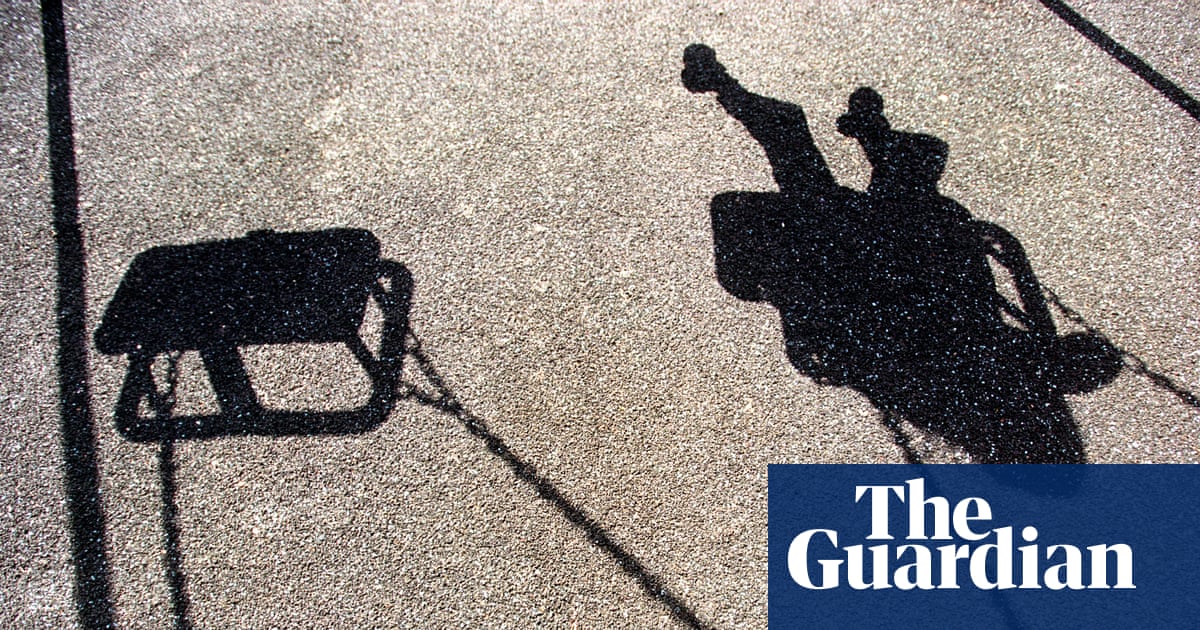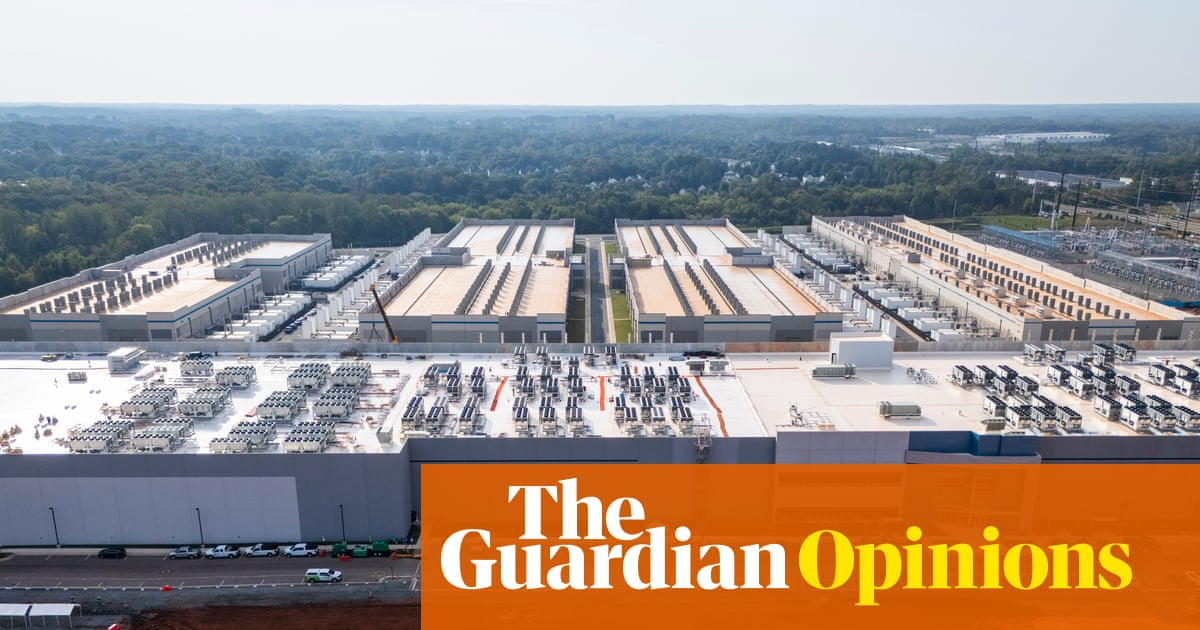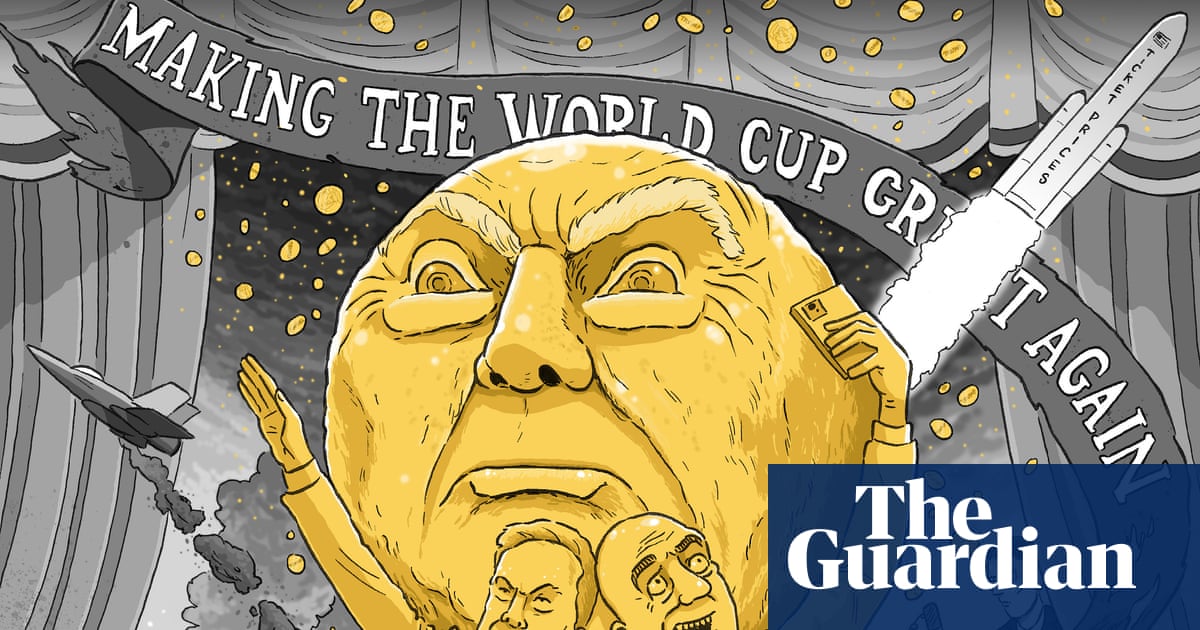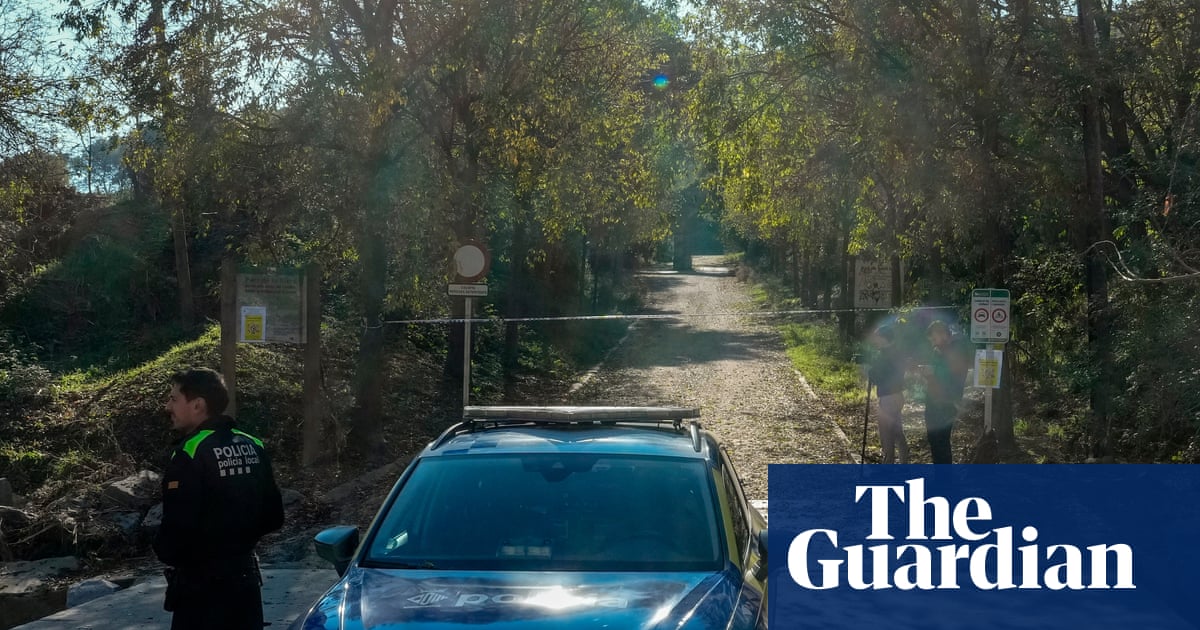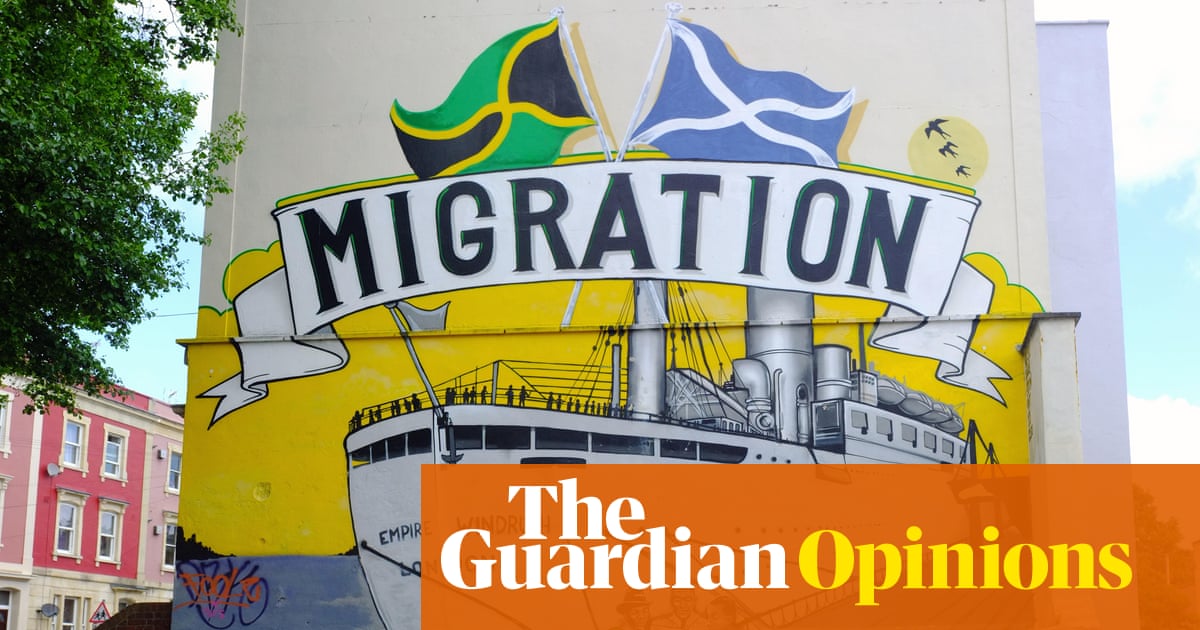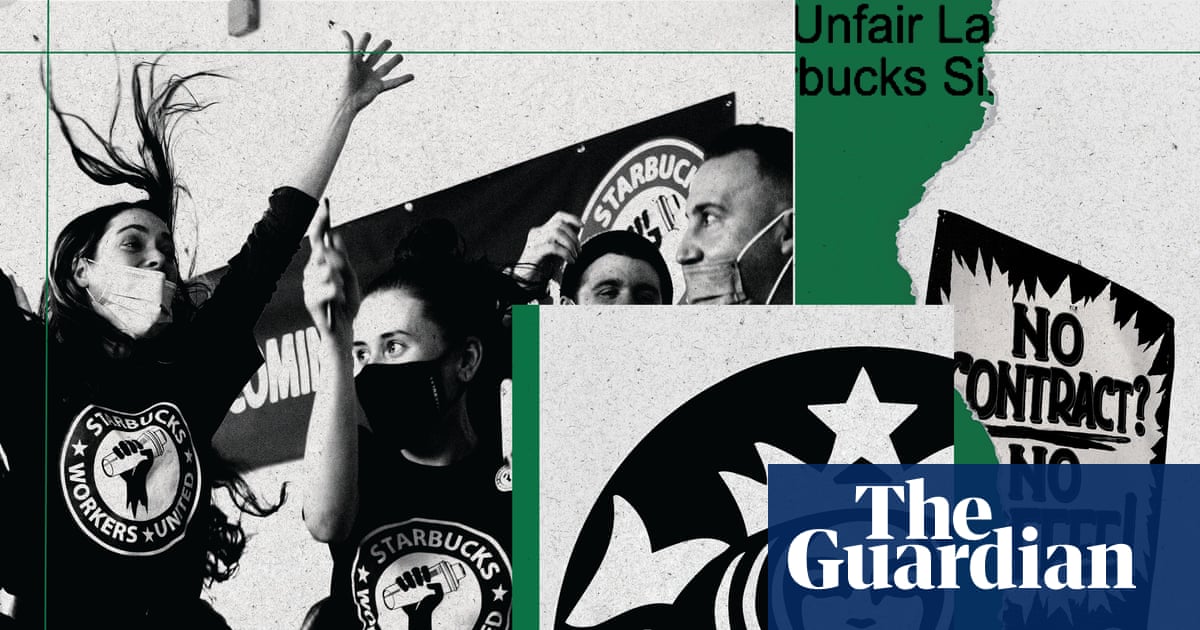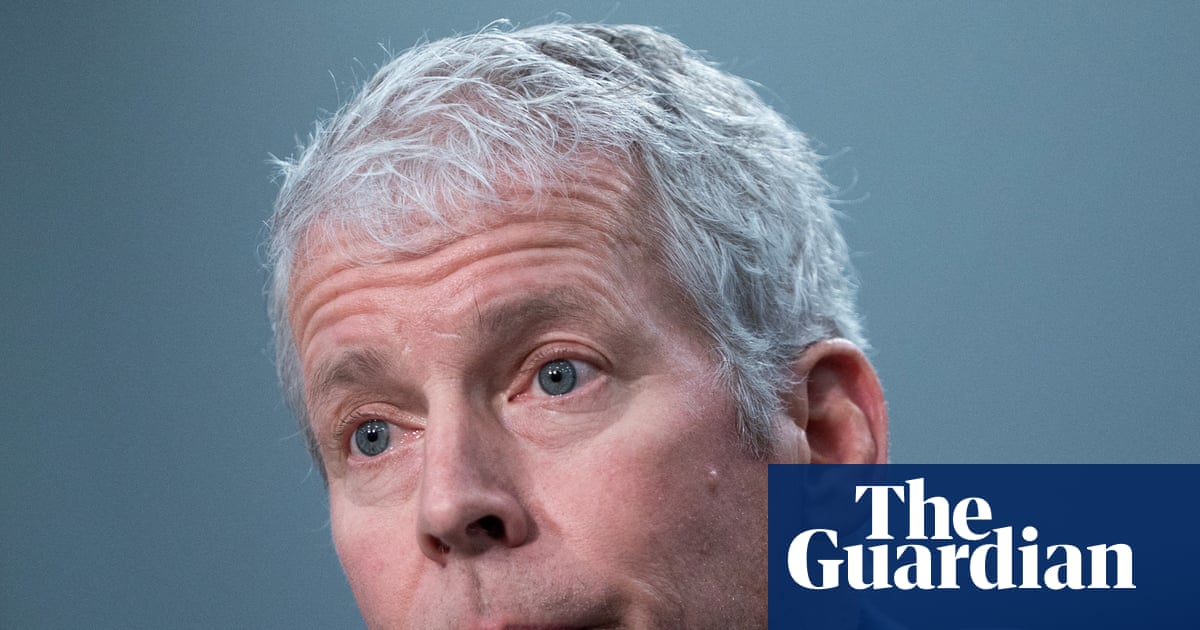US government shuts down after Democrats refuse to back Republican funding plan
A US government shutdown has been triggered after a deadline to reach a funding agreement before the start of the new fiscal year, on 1 October, came and went without a deal.
Democrats and Republicans angrily blamed each other and refused to budge from their positions as the country hurtled towards the midnight ET deadline, unable to find agreement or even negotiate as hundreds of thousands of federal workers stood to be furloughed or laid off.
Senate Democratic leader Chuck Schumer said Republicans were trying to “bully” Democrats by refusing to negotiate on an extension of healthcare benefits and other priorities. Senate majority leader John Thune said Republicans were “not going to be held hostage” by the Democrats’ demands.
Hours before the shutdown, Donald Trump told reporters he had “no choice” but to lay off federal workers if no deal was reached. Asked about why he was considering mass layoffs, Trump said: “No country can afford to pay for illegal immigration, healthcare for everybody that comes into the country. And that’s what they [Democrats] are insisting. They want open borders. They want men playing in women’s sports. They want transgender for everybody. They never stop. They don’t learn. We won an election in the landslide. They just don’t learn. So we have no choice. I have to do that for the country.”
In a polarized Washington, with the chambers narrowly divided, shutdown threats have become a feature of recent congressional budget battles. A standoff in 2018, during Trump’s first term, resulted in a 34-day shutdown, the longest in the modern era. At the time, roughly 800,000 of the federal government’s 2.1 million employees were sidelined without pay.
-
Senate Republicans have scheduled another round of votes on the two funding bills on Wednesday morning, with the stated goal of giving Democrats an opportunity to change their minds.
-
The Democratic leaders Hakeem Jeffries and Chuck Schumer have blamed Donald Trump and Republicans for the shutdown, saying they “do not want to protect the healthcare of the American people”.
-
The White House has responded to the shutdown threat by announcing plans to fire federal workers en masse if funding lapses. “When you shut it down, you have to do layoffs, so we’d be laying off a lot of people,” Donald Trump said earlier on Tuesday, adding: “They’re going to be Democrats.”
-
Russ Vought, director of the White House office of management and budget, released a letter blaming “Democrats’ insane policy demands” for a shutdown. “It is unclear how long Democrats will maintain their untenable posture, making the duration of the shutdown difficult to predict,” Vought wrote in the letter, which was addressed to the heads of federal offices and agencies.
-
Democratic leaders say they are not backing down, but signs have emerged of dissent within their ranks. Three members of the Democratic caucus voted for the Republican proposal on Tuesday evening – two more than when the bill was first considered earlier this month. “I cannot support a costly shutdown that would hurt Nevada families and hand even more power to this reckless administration,” said Democratic senator Catherine Cortez Masto.
We will bring you the latest news and reactions on the shutdown as we get them.
Key events Show key events only Please turn on JavaScript to use this feature
Under the shutdown, the education department will stop its investigations into schools and universities over alleged civil rights violations.
Since the mass layoffs in March, the office has operated under a significantly reduced footprint. The department’s civil rights branch lost about half of its staff. The cuts raised questions about whether the office would be able to shrink a backlog of complaints from students who allege they have experienced discrimination on the basis of race, sex or disability status, AP reports.
The department’s own data has shown a decline in resolving civil rights cases, while new complaints from families have increased. During the shutdown, work on the pending cases will stop.
Already diminished by cuts by the Trump administration, the US education department will see more of its work come to a halt due to the government shutdown.
The department says many of its core operations will continue in the shutdown kicking off Wednesday. Federal financial aid will keep flowing, and student loan payments will still be due.
But investigations into civil rights complaints will stop, and the department will not issue new federal grants, AP reports. About 87% of its workforce will be furloughed, according to a department contingency plan.
AP reports:
Since he took office, president Donald Trump has called for the dismantling of the education department, saying it has been overrun by liberal thinking. Agency leaders have been making plans to parcel out its operations to other departments, and in July the supreme court upheld mass layoffs that halved the department’s staff.
In a shutdown, the administration has suggested federal agencies could see more positions eliminated entirely. In past shutdowns, furloughed employees were brought back once Congress restored federal funding. This time, the White House’s Office of Management and Budget has threatened the mass firing of federal workers.
Appearing before the House Appropriations Committee in May, Education Secretary Linda McMahon suggested this year’s layoffs had made her department lean – even too lean in some cases. Some staffers were brought back, she said, after officials found that the cuts went too deep.
“You hope that you’re just cutting fat. Sometimes you cut a little muscle, and you realize it as you’re continuing your programs, and you can bring people back to do that,” McMahon said. The department had about 4,100 employees when Trump took office in January. It now has about 2,500.

Chris Stein
The US government shut down on Wednesday, after congressional Democrats refused to support a Republican plan to extend funding for federal departments unless they won a series of concessions centered on healthcare.
The GOP, which controls the Senate and the House of Representatives, repudiated their demands, setting off a legislative scramble that lasted into the hours before funding lapsed at midnight, when the Senate failed to advance both parties’ bills to keep funding going.
The shutdown is the first since a 35-day closure that began in December 2018 and extended into the new year, during Trump’s first term. It comes as Democrats look to regain their footing with voters, who re-elected Trump last year and relegated them to the minority in both chambers of Congress.
“Republicans are plunging America into a shutdown, rejecting bipartisan talks, pushing a partisan bill and risking America’s healthcare,” top Senate Democrat Chuck Schumer said on Tuesday evening, as it became clear a shutdown was inevitable.
Last month, House Republicans passed a bill that would fund the government through 21 November, but it requires the support of some Democrats to clear the 60-vote threshold for advancement in the Senate. It failed to gain that support in votes held late on Tuesday, while Republicans also blocked a Democratic proposal to continue funding through October while also making an array of policy changes.
“Far-left interest groups and far-left Democrat members wanted to show down with the president, and so Senate Democrats have sacrificed the American people to Democrats’ partisan interests,” Senate majority leader John Thune said.
Senate Republicans have scheduled another round of votes on the two funding bills on Wednesday morning, with the stated goal of giving Democrats an opportunity to change their minds.
The White House has responded to the shutdown threat by announcing plans to fire federal workers en masse if funding lapses. “When you shut it down, you have to do layoffs, so we’d be laying off a lot of people,” Donald Trump said earlier on Tuesday, adding: “They’re going to be Democrats.”
National Parks will largely remain partially open even as the federal government shuts down. A plan released late on Tuesday, hours before the shutdown was set to begin, outlined how swaths of land not able to be locked down – including open-air memorials, park roads, and trails – will remain accessible to the public.
The document also detailed that more than 9,200 employees will be furloughed, reducing staff by roughly 64%. Only workers deemed necessary to protect “life and property”, will remain on duty.
The former superintendent of Joshua Tree national park said in 2019 the park could take hundreds of years to recover from damage caused by visitors during the 2018-19 shutdown.
In 2013, an estimated 8 million recreation visits and $414 million were lost during the 16-day shutdown, according to the National Parks Conservation Association, citing National Park Service data. During the most recent shutdown in 2019, many parks remained open though no visitor services were provided. The Park Service lost $400,000 a day from missed entrance fee revenue, according to the association’s estimates. What’s more, park visitors would have typically spent $20 million on an average January day in nearby communities.
The Guardian’s video desk has compiled this video as Republicans and Democrats blame each other for the shutdown.
Workers who were furloughed during the 2018-19 shutdown shared their stories with the Guardian in 2019. One, Leisyka Parrott, a furloughed employee with the Bureau of Land Management said: “The thing is when you get back pay, all the fees that you incur by missing payments – you don’t get paid back for those. If you are late for a payment and have a $25 fee, the government doesn’t pay for that.”
“There’s all kinds of issues with raising families, just buying gasoline,” said Franco DiCroce, a US army corps of engineers employee speaking in his capacity as president of Local 98 of the International Federation of Professional and Technical Engineers told the Guardian. “Most of these people, their salaries are not skyrocketing. They’re suffering even more, because some of them live check-to-check, so if they don’t have money coming in, they’re going to have difficulty meeting their needs, to even buy groceries.”
Many turned to food banks in order to eat. “You’ve worked for 10, 20, 30 years for the government,” said Nurel Storey, an officer for the National Treasury Employees Union Chapter 22. “And all of a sudden things have just been shut off, for no fault of your own.”

The 35-day partial shutdown of the US government that started in 2018 cost about $11bn and shaved 0.2% off the nation’s annual economic growth forecasts, the non-partisan Congressional Budget Office said in January 2019.
According to the CBO, that shutdown hurt economic growth because it affected roughly 800,000 workers and delayed federal spending on goods and services.
This shutdown is expected to be worse than previous ones. The impact on federal workers could be even more severe.
Before Trump’s most recent threat of mass layoffs on Tuesday, a memo released last week by the White House’s office of management and budget told agencies not just to prepare for temporary furloughs but for permanent layoffs in the event of a shutdown.
The memo directed agencies to ready reduction-in-force notices for federal programs whose funding sources would lapse in the event of a shutdown and are “not consistent with the president’s priorities”.
OMB led the administration’s earlier efforts to shrink the federal workforce as part of a broader government efficiency campaign led by Elon Musk’s “department of government efficiency”.
In a statement on Thursday, AFL-CIO’s president, Liz Shuler, said government employees had “already suffered immensely” this year under the Trump administration’s vast cuts to the federal workforce. “They are not pawns for the president’s political games,” she said.
Asked about the memo on Thursday, Trump blamed Democrats, saying a shutdown was what the party wanted. “They never change,” he said.
At a news conference, House minority leader Hakeem Jeffries said on Thursday that Democrats “will not be intimidated” by the Trump administration’s threats to fire more federal employees if the federal government shuts down. He added that his message to Russell Vought, the head of OMB, was simple: “Get lost.”
Gold hit a record high and Wall Street futures fell with the dollar Wednesday after the US government shutdown, though most Asian and European markets edged up.
Britain’s stock market hit a new record high, as investors shrugged off concerns about the US government shutdown.
You can follow all of the day’s business developments with Graeme Wearden in the business live blog
Fears shutdown will lead 'worst polluters' to dodge EPA controls
A government shutdown raises questions about how the Environmental Protection Agency can carry out its mission of protecting the America’s health and environment with little more than skeletal staff and funding. The Associated Press has carried this report.
In President Donald Trump’s second term, the EPA has leaned hard into an agenda of deregulation and facilitating Trump’s boosting of fossil fuels like oil, gas and coal to meet what he has called an energy emergency.
Jeremy Symons, a former EPA policy official under President Bill Clinton, said it’s natural to worry that a shutdown will lead “the worst polluters” to treat it as a chance to dump toxic pollution without getting caught.
“Nobody will be holding polluters accountable for what they dump into the air we breathe, in the water we drink while EPA is shut down,” said Symons, now a senior adviser to the Environmental Protection Network, a group of former agency officials advocating for a strong Earth-friendly department.
A scientific study of pollution from about 200 coal-fired power plants during the 2018-2019 government shutdown found they “significantly increased their particulate matter emissions due to the EPA’s furlough.” Soot pollution is connected to thousands of deaths per year in the United States.
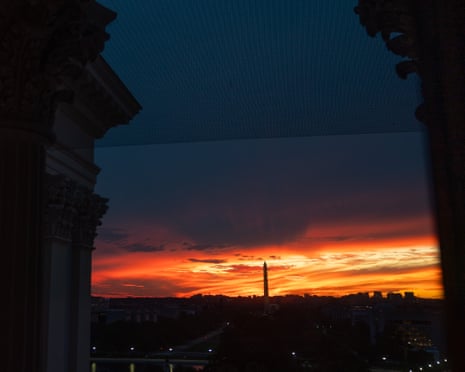
The EPA’s shutdown plan calls for it to stop doing non-criminal pollution inspections needed to enforce clean air and water rules. It won’t issue new grants to other governmental agencies, update its website, issue new permits, approve state requests dealing with pollution regulations or conduct most scientific research, according to the EPA document. Except in situations where the public health would be at risk, work on Superfund cleanup sites will stop.
Marc Boom, a former EPA policy official during the Biden administration, said inspections under the Chemical Accident Risk Reduction program would halt. Those are done under the Clean Air Act to make sure facilities are adequately managing the risk of chemical accidents.
“Communities near the facilities will have their risk exposure go up immediately since accidents will be more likely to occur,” Boom said.
He also said EPA hotlines for reporting water and other pollution problems likely will be closed. “So if your water tastes off later this week, there will be no one at EPA to pick up the phone,” he said.
What does the shutdown mean for flights and travel into and around the US?
While many airport employees, including air traffic controllers, are required to work during the shutdown as they are categorized as essential, they will not be paid and it’s likely there will be staffing issues. That could mean travel disruptions in the US and for overseas visitors.
What is the likely impact on air travel?
Flights will continue but delays and cancellations are very likely. Air traffic controllers and Transportation Security Administration employees who staff airport security checkpoints are essential workers, but will be working without pay. In previous shutdowns flights were significantly disrupted and security lines were lengthy.
The shutdown could also impact the air traffic control system. The Federal Aviation Administration (FAA) recruied 2,000 new controllers in 2025 but training will be hit by the shutdown.
What about trains?
Amtrak trains will run. Amtrak does receive federal grants, but generates revenue, so it doesn’t depend on government funding in the short term. It cannot operate indefinitely though and if a shutdown went on for long enough, it could be affected.
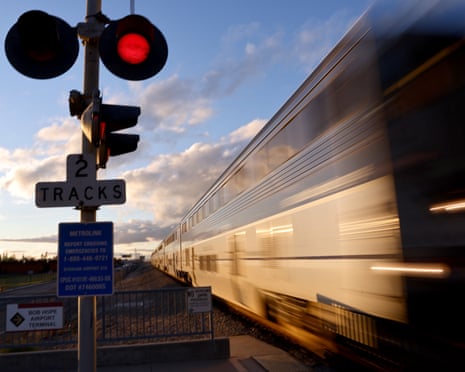
Passports and visas?
A State Department spokesperson told CNN on Monday that “Consular operations domestically and abroad will remain operational. This includes passports, visas, and assisting US citizens abroad.”
Gabrielle Canon
National Park staff are among federal workers required to stop working in a government shutdown. But staff feared Trump officials could once again push for leaving America’s parks open when they are unstaffed.
Irreversible damage was done at popular parks, including Joshua Tree in California, following a month-long shutdown in Donald Trump’s first term, when his administration demanded parks be kept open while funding was paused and workers were furloughed.
Without supervision, visitors left behind trails of destruction. Prehistoric petroglyphs were vandalized at Big Bend national park. Joshua trees, some more than a century old, were chopped down at Joshua Tree national park, as trash and toilets overflowed. Tire tracks crushed sensitive plants and desert habitats from illegal off-roading vehicles in Death Valley. There were widespread reports of wildlife poaching, search-and-rescue crews were quickly overwhelmed with calls, and visitor centers were broken into.

“National parks don’t run themselves. It is hard-working National Park Service employees that keep them safe, clean and accessible,” 40 former superintendents said in a letter issued to Doug Burgum, the interior secretary, this week, urging him to close the parks if a shutdown occurs. “If sufficient staff aren’t there, visitors shouldn’t be either.”
A plan released late on Tuesday, mere hours before the shutdown was set to begin, outlined how swaths of land not able to be locked down – including open-air memorials, park roads, and trails – will remain accessible to the public. The document also detailed that more than 9,200 employees will be furloughed, reducing staff by roughly 64%. Only workers deemed necessary to protect “life and property”, will remain on duty.
What would it take to end the US government shutdown?
Rick Goodman
A deep impasse between Donald Trump and congressional Democrats prevented Congress and the White House from reaching a funding deal. So what will take to end the shutdown?
What Republicans want
Trump’s Republicans control both the House and the Senate, and have already scored some big budget wins this year. The ‘One Big Beautiful Bill’ passed in July and it boosted spending for defense and immigration enforcement, rolled back spending on green energy and other Democratic priorities, while making major cuts in the Medicaid healthcare program for low-income and disabled people to help pay for tax cuts focused mainly on the wealthy. Republicans also have broadly supported the White House’s efforts to claw back money that had already been approved by Congress for foreign aid and public broadcasting, even though that undermines lawmakers’ constitutional authority over spending matters. They have said they would vote for a continuing resolution that would extend funding at current levels through 21 November to allow more time to negotiate a full-year deal.
What Democrats want
As the minority party, Democrats do not have much power. But Republicans will need at least seven Democratic votes to pass any spending bill out of the Senate, where 60 votes are needed to advance most legislation in the 100-seat chamber.
This time, Democrats are using that leverage to push for renewing expanded healthcare subsidies for people who buy insurance through the Affordable Care Act. Their proposal would make permanent enhanced tax breaks that are otherwise due to expire at the end of the year and make them available to more middle-income households. If those tax breaks were to expire, health insurance costs would increase dramatically for many of the 24 million Americans who get their coverage through the ACA, according to the nonpartisan Kaiser Family Foundation.
Democrats also want language inserted into any funding bill that would prohibit Trump from unilaterally ignoring their ACA provisions or temporarily withholding funds.
They also want to roll back other restrictions on ACA coverage that were enacted in the so-called ‘One Big Beautiful Bill’. Those changes would provide health coverage for seven million Americans by 2035, according to the Congressional Budget Office, but also increase government healthcare spending by $662bn over 10 years. Republicans say they are open to considering a fix for the expiring tax breaks, but say the issue should be handled separately. Republicans have accused Democrats of trying to use the stopgap funding bill to open the gates for government healthcare subsidies for immigrants in the US illegally.
Kamala Harris and Democrats take aim at Republicans
Rick Goodman
The former Democratic vice-president Kamala Harris took aim at Republicans over the shutdown, posting on X:
President Trump and Congressional Republicans just shut down the government because they refused to stop your health care costs from rising. Let me be clear: Republicans are in charge of the White House, House, and Senate. This is their shutdown.

Congresswoman Shontel Brown said Donald Trump and Republicans alone are responsible for the shutdown. She said in a statement:
Washington Republicans have totally and completely failed in their responsibility to fund the government. House Republicans weren’t even in Washington this week as the government was close to shutting down. This was no accident; it was a deliberate choice.
We came to work to save health care – they went on vacation.
Every day this shutdown drags on, families, workers, and communities in Northeast Ohio will pay the price: service members and federal employees will miss paychecks, Social Security and veterans’ services could be delayed, and small business loans will stall.
Congresswoman Jasmine Crockett said Republicans “chose chaos” in a post on X:
Make no mistake: Republicans control the House, the Senate, and the White House. This is THEIR shutdown. They had every tool to govern and chose chaos instead. The American people are the ones paying the price.
Which agencies keep operating and which might be affected?
Rick Goodman
Now that a lapse in funding has occurred, the law requires agencies to furlough their “non-excepted” employees. Excepted employees, which include those who work to protect life and property, stay on the job but don’t get paid until after the shutdown ends.
The White House Office of Management and Budget begins the process with instructions to agencies that a lapse in appropriations has occurred and they should initiate orderly shutdown activities. That memo went out Tuesday evening.
The Congressional Budget Office estimates that roughly 750,000 federal employees could be furloughed, with the total daily cost of their compensation at roughly $400m.
FBI investigators, CIA officers, air traffic controllers and agents operating airport checkpoints keep working. So do members of the Armed Forces.
Those programs that rely on mandatory spending generally continue during a shutdown. Social Security payments still go out. Seniors relying on Medicare coverage can still see their doctors and health care providers can be reimbursed.
Each federal agency develops its own shutdown plan, outlining which workers would stay on the job and which would be furloughed.
Health and Human Services will furlough about 41% of its staff out of nearly 80,000 employees, according to a contingency plan posted on its website. As part of that plan, the Atlanta-based Centers for Disease Control and Prevention would continue to monitor disease outbreaks, while activities that will stop include research into health risks and ways to prevent illness.
Research and patient care at the National Institutes of Health would be upended. Patients currently enrolled in studies at the research-only hospital nicknamed the “house of hope” will continue to receive care. Additional sick patients hoping for access to experimental therapies can’t enroll except in special circumstances, and no new studies will begin.
As the shutdown neared, the National Park Service had not yet said whether it will close its more than 400 sites across the US to visitors. Park officials said Tuesday afternoon that contingency plans were still being updated and would be posted to the service’s website.
Many national parks including Yellowstone and Yosemite stayed open during a 35-day shutdown during Trump’s first term. Limited staffing led to vandalism, gates being pried open and other problems including an off-roader mowing down one of the namesake trees at Joshua Tree national park in California.
At the Food and Drug Administration, its “ability to protect and promote public health and safety would be significantly impacted, with many activities delayed or paused”. For example, the agency would not accept new drug applications or medical device submissions that require payment of a user fee.
What does a government shutdown mean and why is this year’s threat more serious?

Lauren Gambino
What does a government shutdown mean?
When Congress fails to pass funding legislation, federal agencies are required by law to halt operations, triggering a shutdown. Employees classified as “non-excepted” are placed on unpaid furlough, while excepted staff – those whose jobs involve protecting life and property – must continue working without pay until after the shutdown ends.
Until Congress acts, many federal services will be temporarily halted or disrupted as certain agencies cease all non-essential functions.
In a polarized Washington, with the chambers narrowly divided, shutdown threats have become a feature of recent congressional budget battles. But more often than not, the parties’ leaders are able to cobble together an 11th hour compromise to forestall a lapse in funding. Not this time.
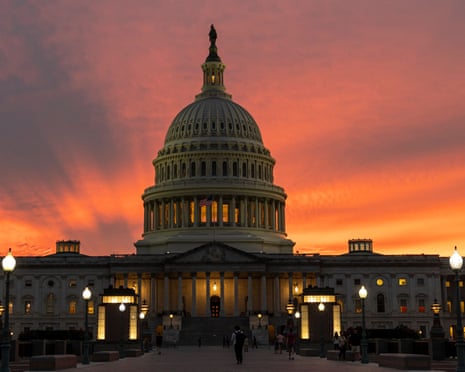
How long will the government be shut down, and what was the longest shutdown?
How long it will last remains unclear. A standoff in 2018, during Trump’s first term, resulted in a 34-day shutdown, the longest in the modern era. At the time, roughly 800,000 of the federal government’s 2.1 million employees were sidelined without pay.
Why is the government shutting down this time?
The federal government’s new fiscal year began on Wednesday, without an agreement on a short-term funding bill.
Democrats, locked out of power in Washington, have little leverage, but their votes are needed to overcome the filibuster in the Senate. They are demanding an extension of subsidies that limit the cost of health insurance under the Affordable Care Act and are set to expire, a rollback of Medicaid cuts made in Trump’s One Big Beautiful Bill Act, and the restoration of funding to public media that was cut in the rescissions package.
Congressional Democrats are under pressure to use their leverage to stand up to Trump and his administration. In March, Schumer lent the necessary Democratic votes to approve a Republican-written short-term funding measure without securing any concessions – a move that infuriated the party’s base.
Republicans, who control both chambers of Congress, are refusing to negotiate with Democrats over their healthcare demands. Instead, GOP leaders in the Senate have vowed to keep forcing Democrats to vote on a stopgap measure that would extend funding levels, mostly at current levels, through 21 November. That bill narrowly passed the House but fell short of the 60-vote threshold in the Senate on Tuesday.
Donald Trump hosted Congressional leaders at the White House earlier this week, but the meeting failed to produce a breakthrough.
Why is this year’s threat to shut down the government more serious?
This time, the impact on federal workers could be even more severe. In a memo released last week, the White House’s office of management and budget (OMB) told agencies not just to prepare for temporary furloughs but for permanent layoffs in the event of a shutdown.
The memo directed agencies to ready reduction-in-force notices for federal programs whose funding sources would lapse in the event of a shutdown and are “not consistent with the president’s priorities”.
The OMB led the administration’s earlier efforts to shrink the federal workforce as part of a broader government efficiency campaign led by Elon Musk’s “department of government efficiency”.
At an event on Tuesday, Trump said “a lot of good can come down from shutdowns” and suggested he would use the pause to “get rid of a lot of things we didn’t want, and they’d be Democrat things”.
The House minority leader, Hakeem Jeffries, has said that Democrats “will not be intimidated” by the Trump administration’s threats to fire more federal employees if the federal government shuts down. He has said that his message to Russell Vought, the head of OMB, was simple: “Get lost.”
Two major federal employee unions sued the Trump administration on Tuesday, accusing it of illegally threatening mass layoffs during a shutdown.
What happens when the government shuts down?
In the event of a full or partial government shutdown, hundreds of thousands of federal workers may be furloughed or required to work without pay. Approximately 750,000 federal employees will be furloughed each day of a government shutdown, according to an estimate by the congressional budget office released on Tuesday.
Operations deemed essential – such as social security, Medicare, military duties, immigration enforcement and air traffic control – would continue, but other services may be disrupted or delayed. Mail delivery and post office operations would continue without interruption.
Agencies have been releasing updated contingency plans in the event of a shutdown. The Department of Education said nearly all its federal employees would be furloughed, while most of the Department of Homeland Security workforce would remain on the job.
According to an interior department contingency plan posted late on Tuesday evening, national parks will remain partially open. “Park roads, lookouts, trails, and open-air memorials will generally remain accessible to visitors,” it said.
During the government shutdown in 2019, national parks reported garbage, staffing shortages and even three deaths as a result of the financial crunch.
The impact of a shutdown can be far-reaching and potentially long-lasting. Previous shutdowns have disrupted tourism to national parks and the Smithsonian museums in Washington, slowed air travel, delayed food-safety inspections, and postponed immigration hearings.
While the broader economy may not feel the effects immediately, analysts warn that a prolonged shutdown could slow growth, disrupt markets and erode public trust.
US government shuts down after Democrats refuse to back Republican funding plan
A US government shutdown has been triggered after a deadline to reach a funding agreement before the start of the new fiscal year, on 1 October, came and went without a deal.
Democrats and Republicans angrily blamed each other and refused to budge from their positions as the country hurtled towards the midnight ET deadline, unable to find agreement or even negotiate as hundreds of thousands of federal workers stood to be furloughed or laid off.
Senate Democratic leader Chuck Schumer said Republicans were trying to “bully” Democrats by refusing to negotiate on an extension of healthcare benefits and other priorities. Senate majority leader John Thune said Republicans were “not going to be held hostage” by the Democrats’ demands.
Hours before the shutdown, Donald Trump told reporters he had “no choice” but to lay off federal workers if no deal was reached. Asked about why he was considering mass layoffs, Trump said: “No country can afford to pay for illegal immigration, healthcare for everybody that comes into the country. And that’s what they [Democrats] are insisting. They want open borders. They want men playing in women’s sports. They want transgender for everybody. They never stop. They don’t learn. We won an election in the landslide. They just don’t learn. So we have no choice. I have to do that for the country.”
In a polarized Washington, with the chambers narrowly divided, shutdown threats have become a feature of recent congressional budget battles. A standoff in 2018, during Trump’s first term, resulted in a 34-day shutdown, the longest in the modern era. At the time, roughly 800,000 of the federal government’s 2.1 million employees were sidelined without pay.
-
Senate Republicans have scheduled another round of votes on the two funding bills on Wednesday morning, with the stated goal of giving Democrats an opportunity to change their minds.
-
The Democratic leaders Hakeem Jeffries and Chuck Schumer have blamed Donald Trump and Republicans for the shutdown, saying they “do not want to protect the healthcare of the American people”.
-
The White House has responded to the shutdown threat by announcing plans to fire federal workers en masse if funding lapses. “When you shut it down, you have to do layoffs, so we’d be laying off a lot of people,” Donald Trump said earlier on Tuesday, adding: “They’re going to be Democrats.”
-
Russ Vought, director of the White House office of management and budget, released a letter blaming “Democrats’ insane policy demands” for a shutdown. “It is unclear how long Democrats will maintain their untenable posture, making the duration of the shutdown difficult to predict,” Vought wrote in the letter, which was addressed to the heads of federal offices and agencies.
-
Democratic leaders say they are not backing down, but signs have emerged of dissent within their ranks. Three members of the Democratic caucus voted for the Republican proposal on Tuesday evening – two more than when the bill was first considered earlier this month. “I cannot support a costly shutdown that would hurt Nevada families and hand even more power to this reckless administration,” said Democratic senator Catherine Cortez Masto.
We will bring you the latest news and reactions on the shutdown as we get them.

 2 months ago
69
2 months ago
69
